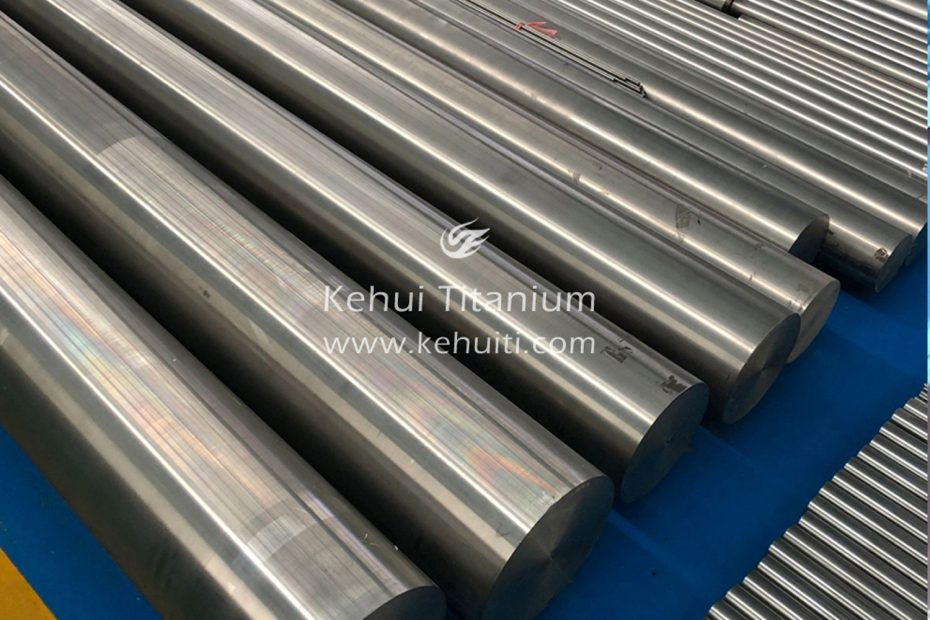| product name | Titanium rods |
| Specification | Diameter: φ3mm-600mm, Length: 500mm-12mm |
| Grade/Material | Chemical use: A1(GR1), TA2(GR2),TA3(GR3) ,TA9(GR7),TA10(GR12),TA18(GR9) Petroleum instruments for aerospace:TC4(GR5), TC6 ,TC11, TC18 |
| standard | ASTM B348, ASTM F67, ASTM F136, GB/T2965,AMS4928 |
| surface | Black leather, pickling, sandblasting, polishing, finishing, high precision |
| shape | Round rods, square rods, hexagonal rods, etc. |
| state | Cold rolling (Y), hot rolling (R), annealing (M), quenching (C) |
| Remark | Can provide fixed length or double length according to customer requirements |
Characteristics of titanium rods
1) High strength. The density of titanium alloy is generally about 4.51g/cubic centimeter, which is only 60% of steel. The density of pure titanium is close to that of ordinary steel. Some high-strength titanium alloys exceed the strength of many alloy structural steels.
High thermal strength, the use temperature is several hundred degrees higher than that of aluminum alloy, and can still maintain the required strength at medium temperature, and can work for a long time at a temperature of 450-500 ° C. It has high strength, while the specific strength of aluminum alloy decreases significantly at 150 °C. The working temperature of titanium alloy can reach 500°C, while that of aluminum alloy is below 200°C.
2) Good corrosion resistance. Titanium alloys work in humid atmosphere and seawater medium, and their corrosion resistance is far superior to that of stainless steel; the resistance to pitting corrosion, acid corrosion, and stress corrosion is particularly strong; it is resistant to alkali, chloride, and chlorine Organic substances, nitric acid, sulfuric acid, etc. have excellent corrosion resistance. However, titanium has poor corrosion resistance to media with reducing oxygen and chromium salts.
3) Good low-temperature performance, titanium alloy can still maintain its mechanical properties at low and ultra-low temperatures. Titanium alloys with good low temperature performance and extremely low interstitial elements, such as TA7, can maintain certain plasticity at -253°C. Therefore, titanium alloy is also an important low-temperature structural material.
4) High chemical activity, titanium has high chemical activity, and has a strong chemical reaction with O, N, H, CO, CO2, water vapor, ammonia, etc. in the atmosphere.
5) The thermal conductivity is small, the thermal conductivity of titanium λ=15.24W/(m.K) is about 1/4 of nickel, 1/5 of iron, and 1/14 of aluminum, and the thermal conductivity of various titanium alloys is higher than that of titanium The coefficient is about 50% lower.
Application of titanium rods
- Chemical industry: Titanium rods are mainly used in the chlor-alkali industry, metal anode electrolyzers, ionic membrane electrolyzers, filters, pump valves, wet oxygen coolers, refined brine preheaters, dechlorination towers, chlorine gas cooling and washing tower etc.
- Medical field: Titanium rods are mainly used as medical devices, orthopedic implants, such as bone screws, joints and spines.
- Petroleum field: mainly TC4, TC11, TC18 and other high-strength titanium alloy rods, which are drilled and machined into titanium alloy tubes, mainly used for oil logging instrument outer cylinders, inclinometer outer cylinders, and deep sea resistance Ballast and other products.
- Aerospace field: Aircraft nozzles, fuselage frames, impellers, and other parts.
